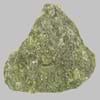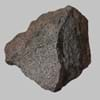Tachylite and Shale
Definition
Definition
Tachylite is a vitreous form of basaltic volcanic glass. This glass is formed naturally by the rapid cooling of molten basalt
Shale is a fine-grained sedimentary rock which is formed by the compaction of silt and clay-size mineral particles
History
Origin
Iceland
Unknown
Discoverer
Unknown
Unknown
Etymology
From German Tachylite, from tachy- + Greek lutos soluble, melting
From German Schalstein laminated limestone, and Schalgebirge layer of stone in stratified rock. From Old English scealu in its base sense of- thing that divides or separate,
Class
Igneous Rocks
Sedimentary Rocks
Sub-Class
Durable Rock, Medium Hardness Rock
Durable Rock, Medium Hardness Rock
Family
Group
Volcanic
Not Applicable
Other Categories
Coarse Grained Rock, Fine Grained Rock, Medium Grained Rock, Opaque Rock
Fine Grained Rock, Opaque Rock
Texture
Texture
Vitreous
Clastic, Splintery
Color
Black, Dark Brown
Black, Brown, Buff, Green, Grey, Red, Yellow
Maintenance
More
More
Durability
Durable
Durable
Water Resistant
Yes
No
Scratch Resistant
No
No
Stain Resistant
No
No
Wind Resistant
Yes
No
Acid Resistant
Yes
No
Appearance
Glassy
Muddy
Uses
Architecture
Interior Uses
Decorative Aggregates, Interior Decoration
Decorative Aggregates, Homes, Interior Decoration
Exterior Uses
As Building Stone, As Facing Stone, Garden Decoration, Paving Stone
As Building Stone, As Facing Stone, Office Buildings
Other Architectural Uses
Curbing
Curbing
Industry
Construction Industry
Cutting Tool, Knives, Landscaping, Scrapers
Cement Manufacture, Construction Aggregate, for Road Aggregate, Making natural cement, Raw material for the manufacture of mortar
Medical Industry
Not Yet Used
Not Yet Used
Antiquity Uses
Artifacts
Artifacts, Sculpture
Other Uses
Commercial Uses
Cemetery Markers, Creating Artwork
Creating Artwork, Pottery
Types
Types
Not Available
Red Shale, Black Shale, Green Shale, Grey Shale and Yellow Shale
Features
Available in Lots of Colors and Patterns, Clasts are smooth to touch, NA
Easily splits into thin plates, Generally rough to touch, Very fine grained rock
Archaeological Significance
Monuments
Not Yet Used
Used
Famous Monuments
Not Applicable
Jantar Mantar in India
Sculpture
Not Yet Used
Used
Famous Sculptures
Not Applicable
Data Not Available
Pictographs
Used
Used
Petroglyphs
Used
Used
Figurines
Not Yet Used
Used
Fossils
Absent
Present
Formation
Formation
Tachylite is a fine-grained, hard rock which is a type of metasomatite, essentially altered basalt. It forms with or without crystallization, either below the surface as intrusive rocks or on the surface as extrusive rocks.
Shale forms when very fine-grained clay particles are deposited in water which settle at the bottom of water bodies. They are later compacted hence forming shale.
Composition
Mineral Content
Feldspar, Olivine
Albite, Biotite, Calcite, Chert, Chlorite, Dolomite, Hematite, Micas, Muscovite or Illite, Pyrite, Quartz, Silica, Sulfides
Compound Content
Fe, Mg
Ca, Fe, Mg, Silicon Dioxide, Sodium
Transformation
Metamorphism
Yes
No
Types of Metamorphism
Burial Metamorphism, Cataclastic Metamorphism, Contact Metamorphism, Hydrothermal Metamorphism, Impact Metamorphism, Regional Metamorphism
Not Applicable
Weathering
Yes
Yes
Types of Weathering
Biological Weathering, Chemical Weathering, Mechanical Weathering
Biological Weathering, Chemical Weathering, Mechanical Weathering
Erosion
Yes
Yes
Types of Erosion
Chemical Erosion, Sea Erosion, Water Erosion, Wind Erosion
Chemical Erosion, Coastal Erosion, Glacier Erosion
Properties
Physical Properties
Hardness
5.5
3
Grain Size
Medium to Fine Coarse Grained
Very fine-grained
Fracture
Conchoidal
Not Available
Streak
Vermilion
White
Porosity
Less Porous
Highly Porous
Luster
Resinous
Dull
Compressive Strength
206.00 N/mm2
8
95.00 N/mm2
20
Cleavage
Not Available
Slaty
Toughness
Not Available
2.6
Specific Gravity
2.4
2.2-2.8
Transparency
Opaque
Opaque
Density
3.058 g/cm3
2.4-2.8 g/cm3
Thermal Properties
Specific Heat Capacity
0.56 kJ/Kg K
22
0.39 kJ/Kg K
23
Resistance
Heat Resistant, Impact Resistant, Wear Resistant
Heat Resistant, Impact Resistant
Reserves
Deposits in Eastern Continents
Asia
Cambodia, Russia, South Korea
Bangladesh, China, India, Russia
Africa
East Africa
Ethiopia, Kenya, Morocco, South Africa, Tanzania
Europe
England, Germany, Hungary, Iceland, Scotland, Sweden
Austria, France, Germany, Greece, Italy, Romania, Scotland, Spain, Switzerland
Others
Hawaii Islands
Not Yet Found
Deposits in Western Continents
North America
USA
USA
South America
Not Yet Found
Bolivia, Chile, Colombia, Ecuador, Peru, Venezuela
Deposits in Oceania Continent
Australia
Victoria
New South Wales, New Zealand, Queensland, Victoria, Western Australia
All about Tachylite and Shale Properties
Know all about Tachylite and Shale properties here. All properties of rocks are important as they define the type of rock and its application. Tachylite belongs to Igneous Rocks while Shale belongs to Sedimentary Rocks.Texture of Tachylite is Vitreous whereas that of Shale is Clastic, Splintery. Tachylite appears Glassy and Shale appears Muddy. The luster of Tachylite is resinous while that of Shale is dull. Tachylite is available in black, dark brown colors whereas Shale is available in black, brown, buff, green, grey, red, yellow colors. The commercial uses of Tachylite are cemetery markers, creating artwork and that of Shale are creating artwork, pottery.
|
||
|
||
|










